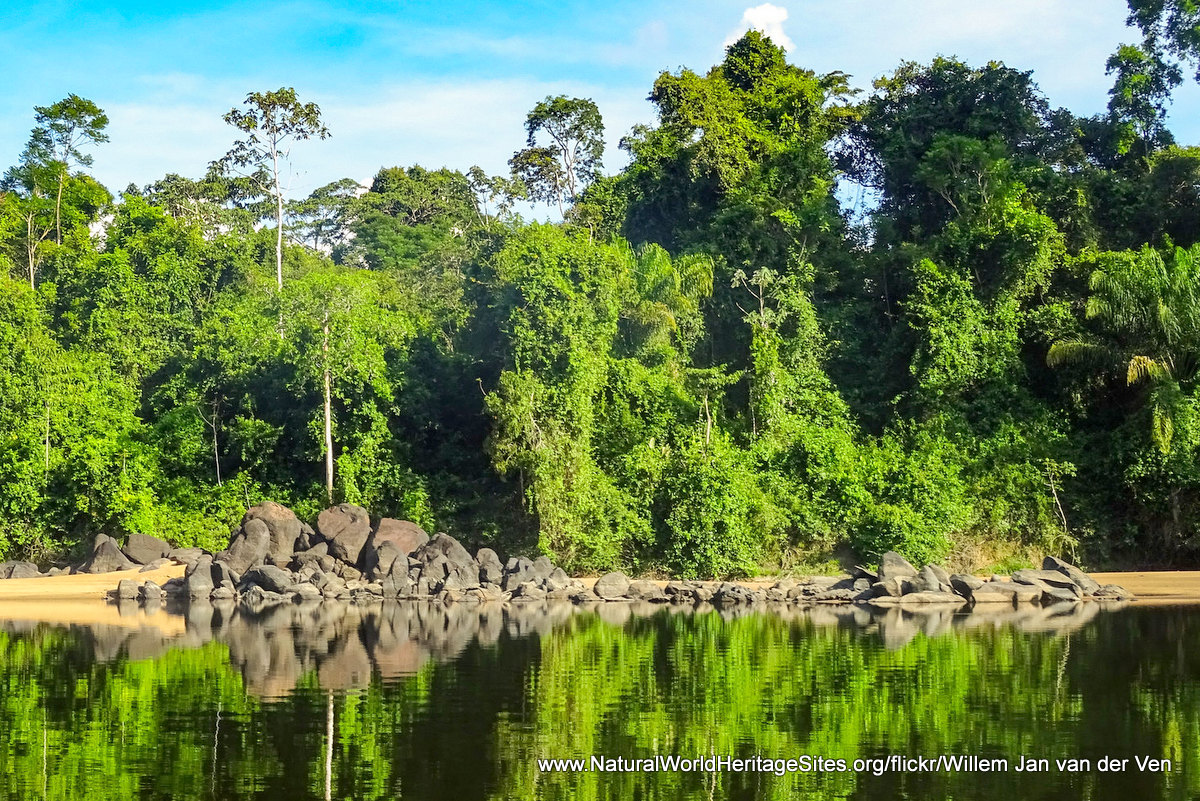Have you ever wondered what it would be like to explore the heart of the Amazon rainforest? Well, let me tell you about the Central Suriname Nature Reserve, a place that will leave you in awe of its sheer beauty and untouched landscapes. In this article, we’ll delve into the fascinating details of this hidden gem and discover why it’s a must-visit destination for nature lovers and adventure seekers alike.
Nestled in the heart of South America, the Central Suriname Nature Reserve spans over 1.6 million hectares, making it one of the largest nature reserves in the world. It’s home to a vast array of diverse ecosystems, from pristine rainforests to savannas and wetlands. Here, you can witness the breathtaking sight of towering trees reaching for the sky, while vibrant birds and exotic wildlife roam freely in their natural habitat. The reserve is an ecological treasure trove, providing shelter to rare and endangered species, such as the giant otter, jaguar, and harpy eagle. So, get ready to embark on a journey of discovery as we unravel the secrets of this Amazonian paradise in the upcoming article. The Central Suriname Nature Reserve is a hidden gem nestled in the heart of Suriname, a small country located on the northeastern coast of South America. Covering an impressive area of 1.6 million hectares, this natural marvel is one of the largest protected areas in the entire Amazon Basin. With its unparalleled ecological importance, rich biodiversity, and stunning physical features, the Central Suriname Nature Reserve truly showcases the awe-inspiring beauty of the Amazonian rainforest.
Location and Size
The Central Suriname Nature Reserve is situated in the central part of Suriname, encompassing portions of the districts of Brokopondo, Para, and Sipaliwini. Spanning across three different geographical regions, this reserve stretches from lowland swamp forests to rolling hills and pristine mountain ranges. Its vast expanse makes it a critical component of the Guiana Shield, which is considered one of the most intact wilderness areas on the planet.
Ecological Importance
As one of the last untouched wilderness areas in the world, the Central Suriname Nature Reserve plays a vital role in maintaining global biodiversity and providing crucial ecosystem services. Its untouched rainforests act as carbon sinks, absorbing large amounts of carbon dioxide from the atmosphere and helping to mitigate climate change. Furthermore, the reserve is a key water catchment area, providing clean water for both surrounding communities and wildlife.
Biodiversity
The Central Suriname Nature Reserve is teeming with an astonishing array of plant and animal species, making it a biodiversity hotspot in the Amazon Basin. Its diverse flora includes over 5000 species of plants, ranging from towering canopy trees to delicate orchids. The reserve is also home to numerous endemic and rare species that can only be found within its boundaries, adding to its immense ecological significance.
Protected Area Status
Due to its exceptional ecological value, the Central Suriname Nature Reserve has been designated as a protected area by the Surinamese government. This official recognition ensures the preservation of the reserve’s unique habitats and helps to safeguard its biodiversity for future generations. The strict regulations prohibit any form of commercial resource extraction, such as logging or mining, within the reserve.
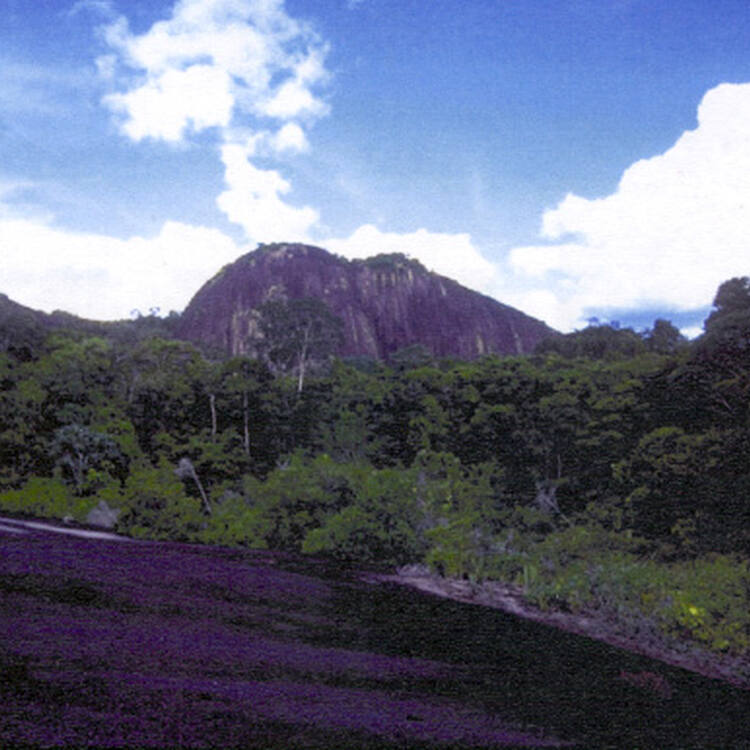
Flora and Fauna
Rich Diversity of Plant Life
The Central Suriname Nature Reserve boasts an astonishing richness of plant life, with a wide variety of species found nowhere else on Earth. Towering emergent trees pierce through the dense canopy, creating a breathtaking display of greenery. Lush ferns, vibrant bromeliads, and delicate orchids can be found at every turn, showcasing the reserve’s incredible floral diversity.
Endemic and Rare Species
Within the reserve’s pristine rainforests, a treasure trove of endemic and rare species can be discovered. Countless new species are still being discovered by scientists, highlighting the importance of preserving this unique habitat. One such example is the Surinamese harpy eagle, a majestic bird of prey found exclusively in the Central Suriname Nature Reserve.
Abundance of Animal Life
The abundance of animal life in the Central Suriname Nature Reserve is truly astounding. Jaguars, tapirs, and giant anteaters roam freely in the vast wilderness, while troops of capuchin monkeys swing from tree to tree. Over 400 species of birds have been recorded within the reserve, including colorful macaws and elusive harpy eagles. The reserve’s rivers are teeming with fish and provide a vital food source for both human and animal populations.
Threatened Species
Despite its protected status, the Central Suriname Nature Reserve is not exempt from threats to its biodiversity. Several species, such as the giant river otter and the Surinamese horned frog, are facing increasing pressures due to habitat destruction and climate change. The reserve serves as an important stronghold for these endangered species, highlighting the urgent need for conservation efforts.
Physical Features
Topography
The Central Suriname Nature Reserve boasts a diverse topography that ranges from lowland swamp forests to rugged mountain ranges. The pristine rainforests give way to rolling hills, and as you venture further inland, the landscape becomes more rugged and mountainous. The reserve is home to the Voltzberg, a towering granite dome that offers panoramic views of the surrounding rainforest.
Rivers and Water Bodies
The Central Suriname Nature Reserve is crisscrossed by countless rivers and water bodies, further adding to its natural beauty. The rivers serve as important transportation routes for both humans and wildlife, providing a lifeline in this remote region. The pristine waters are also home to numerous fish species and offer excellent opportunities for fishing and recreational activities.
Climatic Conditions
Located within the tropical rainforest belt, the Central Suriname Nature Reserve experiences hot and humid weather year-round. Average temperatures range from 25 to 30 degrees Celsius (77 to 86 degrees Fahrenheit). The region experiences distinct wet and dry seasons, with heavy rainfall occurring between April and August. The tropical climate contributes to the remarkable biodiversity found within the reserve.
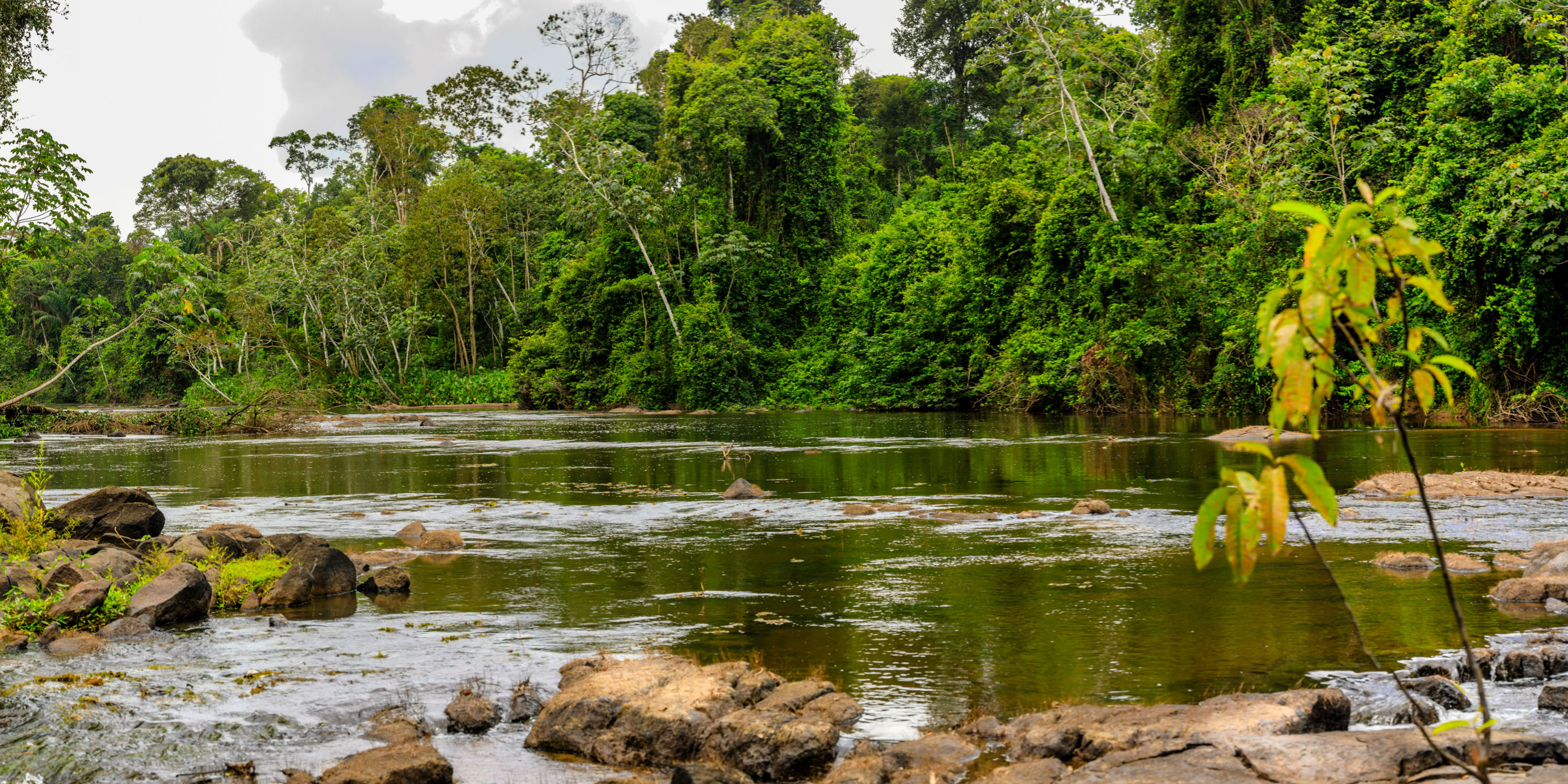
Indigenous Communities
Historical Significance
The Central Suriname Nature Reserve has been inhabited by Indigenous communities for countless generations. The area holds significant historical and cultural value for these communities, as it is deeply intertwined with their ancestral lands and traditions. The reserve serves as a living testament to the harmonious relationship between Indigenous peoples and the natural world.
Cultural Practices
The Indigenous communities within the reserve have a rich cultural heritage that has been passed down through generations. Traditional practices, such as hunting, fishing, and farming, are integral to their way of life. These communities have a deep understanding of the natural resources within the reserve and have developed sustainable practices that ensure the long-term preservation of their environment.
Livelihoods and Traditional Knowledge
The Central Suriname Nature Reserve provides invaluable resources and livelihood opportunities for the Indigenous communities residing within its boundaries. These communities rely on the forest for food, medicine, and materials for shelter and crafts. Their traditional knowledge of the rainforest’s flora and fauna is invaluable for conservation efforts and contributes to the overall management of the reserve.
Conservation Efforts
Creation of the Reserve
The Central Suriname Nature Reserve was officially established in [year] with the collaborative efforts of the Surinamese government, Indigenous communities, and international conservation organizations. This landmark achievement recognized the critical importance of preserving the natural heritage of Suriname and showcased the country’s commitment to conservation.
Partnerships and Collaborations
To effectively manage the reserve and ensure its long-term conservation, partnerships and collaborations between government agencies, Indigenous communities, and non-profit organizations have been forged. These partnerships enable the sharing of resources, technical expertise, and funding, allowing for a more holistic approach to conservation.
Management Strategies
The management of the Central Suriname Nature Reserve is based on a participatory approach that involves local communities in decision-making processes. Sustainable development plans are implemented, ensuring the well-being of both the natural environment and the Indigenous populations. Strict regulations are in place to prevent illegal activities within the reserve.
Conservation Successes
The tireless efforts of the Surinamese government, Indigenous communities, and conservation organizations have led to several notable successes within the Central Suriname Nature Reserve. Populations of endangered species, such as the giant river otter and the black caiman, have shown signs of recovery, highlighting the positive impact of conservation measures. These successes serve as an inspiration for future conservation efforts.
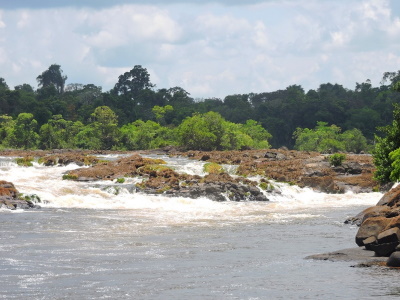
Tourism and Recreation
Natural Attractions
The Central Suriname Nature Reserve offers a wealth of natural attractions for visitors to explore. The pristine rainforests provide endless opportunities for hiking, birdwatching, and wildlife spotting. Breathtaking waterfalls, such as Raleighvallen and Tafelbergvallen, offer a refreshing respite from the tropical heat. The reserve’s rivers are ideal for canoeing and fishing, providing a chance to immerse yourself in the untouched beauty of Suriname’s rainforest.
Exploring the Reserve
To fully experience the wonders of the Central Suriname Nature Reserve, guided tours led by Indigenous community members are available. These knowledgeable guides provide unique insights into the flora, fauna, and cultural heritage of the reserve. Multi-day treks and river expeditions allow visitors to delve deep into the heart of the Amazonian rainforest, creating memories that will last a lifetime.
Sustainable Tourism Practices
Sustainable tourism practices are at the forefront of the Central Suriname Nature Reserve’s approach to tourism. Visitors are encouraged to minimize their environmental impact by practicing “leave no trace” principles and respecting the cultural values of the Indigenous communities. By supporting eco-friendly accommodations and local businesses, travelers can contribute to the sustainable development of the surrounding communities.
Challenges and Threats
Illegal Logging and Mining
Despite its protected status, the Central Suriname Nature Reserve faces threats from illegal logging and mining operations. Criminal networks exploit the remote nature of the reserve to extract valuable timber and minerals, causing deforestation and habitat destruction. Strengthening law enforcement and enhancing surveillance efforts are crucial for combating these illicit activities.
Hunting and Wildlife Trade
The reserve’s wildlife is also targeted by illegal hunting and the wildlife trade. Endangered species, such as the jaguar and giant anteater, are particularly vulnerable to these activities. Strict regulations and community-based monitoring initiatives are being implemented to address this threat and ensure the long-term survival of the reserve’s diverse animal populations.
Climate Change Impact
Climate change poses a significant threat to the Central Suriname Nature Reserve and its delicate ecosystems. Rising temperatures, increased frequency of extreme weather events, and changing rainfall patterns can disrupt the balance of the rainforest and negatively impact species survival. Mitigation and adaptation strategies, focused on preserving the reserve’s unique habitats, are crucial for ensuring its resilience in the face of climate change.
Infrastructure Development
As Suriname undergoes economic development, infrastructure projects, such as roads and dams, can pose a threat to the Central Suriname Nature Reserve. Fragmentation of habitats and increased accessibility can lead to increased deforestation, wildlife poaching, and disturbance of Indigenous communities. Balancing the need for development and conservation is a delicate task that requires careful planning and consideration.
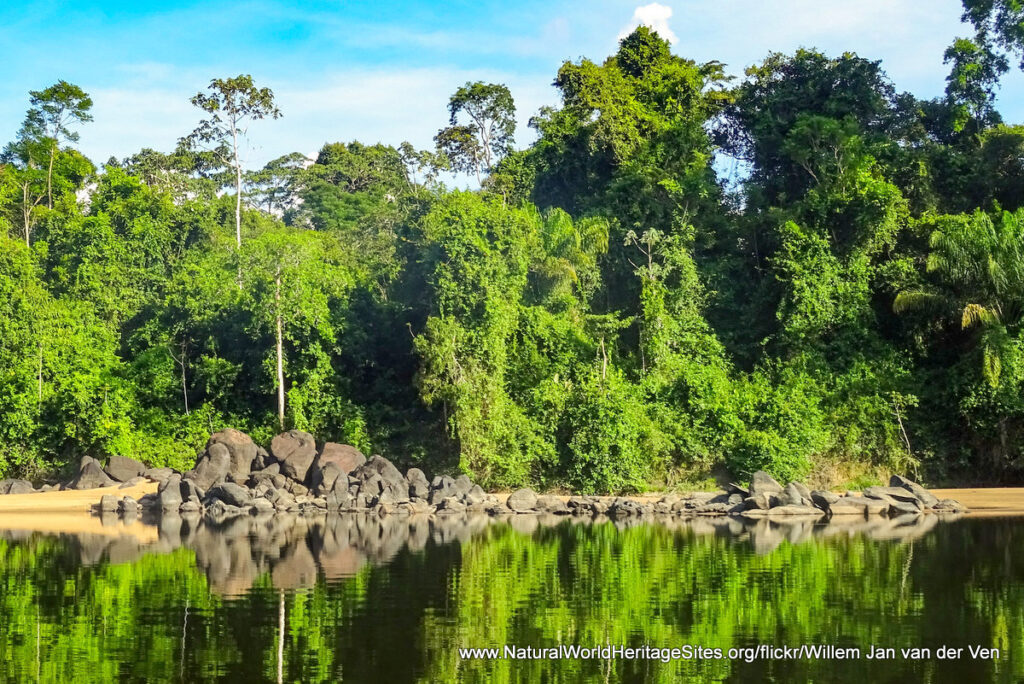
Scientific Research
Biological Studies
The Central Suriname Nature Reserve serves as a living laboratory for scientists studying various aspects of biodiversity and ecology. Ongoing biological studies contribute to our understanding of the Amazon rainforest’s intricate web of life and aid in the identification of new species. Research findings help inform conservation strategies and contribute to the global body of knowledge on tropical ecosystems.
Ecological Monitoring
Monitoring the ecological health of the Central Suriname Nature Reserve is crucial for assessing the effectiveness of conservation efforts and detecting any changes in biodiversity. Researchers and conservationists collaborate to monitor key indicators, such as species populations and habitat quality. Long-term monitoring programs help identify potential threats and guide adaptive management strategies.
Ethnobotanical Research
The vast knowledge held by Indigenous communities regarding the medicinal properties of plants within the Central Suriname Nature Reserve has garnered significant interest from researchers. Ethnobotanical studies focus on documenting traditional knowledge of medicinal plants and their potential applications in modern medicine. This research not only contributes to the preservation of traditional cultures but also has the potential to offer valuable insights into the development of new drugs.
Educational Initiatives
Environmental Education Programs
Education plays a pivotal role in promoting the conservation of the Central Suriname Nature Reserve. Environmental education programs are implemented in local schools and communities to raise awareness about the importance of biodiversity and sustainable practices. Through hands-on activities, students and community members learn about the interconnectedness of ecosystems, fostering a sense of stewardship and responsibility.
Capacity Building
Capacity building initiatives are designed to enhance the knowledge and skills of local communities and stakeholders in the management and conservation of the reserve. Training programs, workshops, and skill-sharing opportunities empower individuals and organizations to actively participate in decision-making processes and contribute to the long-term protection of the Central Suriname Nature Reserve.
Community Engagement
Engaging local communities in conservation efforts is a fundamental aspect of preserving the Central Suriname Nature Reserve. Collaborative approaches ensure that community members have a voice in decision-making processes and are active participants in the management of their ancestral lands. Empowering communities to become stewards of the reserve not only benefits biodiversity but also fosters a sense of pride and ownership.
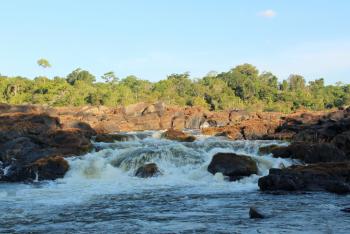
International Recognition
UNESCO World Heritage Site
In [year], the Central Suriname Nature Reserve was inscribed as a UNESCO World Heritage Site, further recognizing its outstanding universal value. This prestigious designation serves as a testimony to the reserve’s exceptional biodiversity and the tireless efforts of the Surinamese government and local communities in its conservation.
RAMSAR Convention
Several of the Central Suriname Nature Reserve’s wetland areas have been designated as RAMSAR sites, under the RAMSAR Convention on Wetlands. These sites are recognized for their critical importance in supporting migratory waterbirds and maintaining ecological processes. This international recognition highlights the reserve’s significance as a haven for water-related biodiversity.
Status as a Global Biodiversity Hotspot
The Central Suriname Nature Reserve falls within the Guiana Shield, which is widely recognized as a global biodiversity hotspot. This designation reflects the extraordinary richness of species and ecosystems found within the reserve. The hotspots are areas of high biodiversity that face significant threats, making their conservation even more critical.
Social and Economic Benefits
Job Opportunities
Conservation efforts within the Central Suriname Nature Reserve have created job opportunities for local communities. Indigenous community members serve as guides, providing valuable insights into the reserve’s natural and cultural heritage. Additionally, the growth of sustainable tourism offers employment in the hospitality sector, contributing to the economic well-being of the surrounding communities.
Eco-tourism Revenue
The Central Suriname Nature Reserve has seen a rise in eco-tourism in recent years. Tourists from around the world are drawn to the reserve’s untouched beauty, contributing to the local economy. Revenue generated from eco-tourism initiatives directly supports conservation efforts, ensuring the long-term sustainability of the reserve and providing economic benefits to Indigenous communities.
Preservation of Traditional Lifestyles
By placing a value on the natural resources found within the Central Suriname Nature Reserve, conservation efforts have helped preserve the traditional lifestyles of Indigenous communities. Through sustainable practices and cultural tourism initiatives, Indigenous communities have been able to maintain their connection to the land, ensuring the continuation of their unique way of life.
Future Conservation Efforts
Expanding Protected Areas
As our understanding of the Amazon rainforest’s importance grows, there is a need to expand protected areas within the Central Suriname Nature Reserve. Collaborative efforts between the Surinamese government, Indigenous communities, and conservation organizations are ongoing to identify and designate additional areas for protection, safeguarding the region’s incredible biodiversity for future generations.
Sustainable Development Projects
Balancing conservation and sustainable development is a challenge that requires innovative solutions. The Central Suriname Nature Reserve aims to implement sustainable development projects that benefit both the environment and the surrounding communities. Initiatives such as organic farming and renewable energy projects can provide alternative livelihoods while minimizing negative impacts on the reserve’s fragile ecosystems.
Engaging Indigenous Communities
The inclusion and active participation of Indigenous communities in conservation efforts remain essential for the long-term success of the Central Suriname Nature Reserve. Strengthening partnerships, promoting cultural tourism, and enhancing capacity building initiatives are crucial for empowering Indigenous communities as key stakeholders and fostering a sense of shared responsibility for the reserve’s long-term preservation.
Conclusion
The Central Suriname Nature Reserve stands as a testament to the staggering beauty and ecological importance of the Amazonian rainforest. Within its vast expanse, an abundance of plant and animal life thrives, creating a vibrant tapestry that showcases the wonders of nature. The reserve’s physical features, such as its stunning rivers and diverse topography, further add to its allure. It is through the collaborative efforts of the Surinamese government, Indigenous communities, and conservation organizations that this natural paradise has been preserved for future generations.
As you explore the Central Suriname Nature Reserve and immerse yourself in its breathtaking beauty, you become a witness to the delicate balance between conservation and development. It is a reminder that we all have a collective responsibility to protect and sustain the Amazonian beauty that lies within this majestic reserve. By balancing our actions, preserving traditional practices, and embracing sustainable development, we can ensure that the Central Suriname Nature Reserve remains a beacon of hope and a testament to the awe-inspiring wonders of the natural world.
